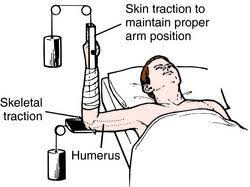A nurse is caring for a client who is receiving cisplatin for the treatment of ovarian cancer. The client's most recent complete blood count (CBC) is shown in the table below. It is important for the nurse to consider which of the following for the client?
- WBC: 1,400/mm³
- RBC: 4.3 x 10¹²/L
- Hgb: 12.1 g/dL
- Hct: 36.5%
- Platelets: 170,000/mm³
- Albumin: 4.5 g/dL
Given the options:
The client should receive an erythropoiesis-stimulating agent.
The client should receive a diet with increased protein.
The client has an increased risk of infection.
The client has an increased risk for bleeding.
The Correct Answer is C
Choice A reason: The use of erythropoiesis-stimulating agents (ESAs) is indicated for anemia due to chemotherapy¹. However, the client's hemoglobin (Hgb) level is 12.1 g/dL, which is within the normal range (normal: 12-15.5 g/dL for women). Therefore, administering an ESA is not indicated based on the Hgb level provided.
Choice B reason: A diet with increased protein can be beneficial for patients undergoing chemotherapy as it helps in tissue repair and immune system function. However, the client's albumin level is 4.5 g/dL, which falls within the normal range (normal: 3.4-5.4 g/dL), suggesting adequate protein intake. Thus, there is no indication that the client requires an increased protein diet based on the albumin level provided.
Choice C reason: The client's white blood cell (WBC) count is 1,400/mm³, which is below the normal range (normal: 4,500-11,000/mm³). This condition, known as leukopenia, significantly increases the risk of infection³. Therefore, the nurse should prioritize monitoring for signs of infection and implementing infection control measures.
Choice D reason: The client's platelet count is 170,000/mm³, which is within the normal range (normal: 150,000-450,000/mm³). Although cisplatin can cause thrombocytopenia, the current platelet count does not indicate an increased risk for bleeding⁴. Therefore, this choice is not correct based on the platelet count provided.
Nursing Test Bank
Naxlex Comprehensive Predictor Exams
Related Questions
Correct Answer is D
Explanation
Choice A reason:
Urine-specific gravity measures the concentration of urine compared to water. It can indicate various conditions affecting the kidneys, but it does not provide a direct measure of renal function. It can be affected by hydration status and does not specifically reflect kidney damage or disease.
Choice B reason:
Blood urea nitrogen (BUN) levels can indicate kidney health; however, BUN can also be influenced by factors such as protein intake, hydration, and liver function. Therefore, while it is a useful test, it is not the most specific indicator of renal function in isolation.
Choice C reason:
Serum sodium levels are important for assessing electrolyte balance and can be affected by kidney function. However, changes in serum sodium are not specific to kidney function alone and can result from a variety of conditions.
Choice D reason:
Serum creatinine is a waste product from the normal breakdown of muscle tissue. As the kidneys are responsible for filtering out creatinine, its level in the blood is a good indication of kidney function. Elevated levels of serum creatinine may indicate impaired kidney function or kidney disease. In the context of SLE, where kidney involvement is common, serum creatinine is a crucial marker for monitoring renal function.
Correct Answer is C
Explanation
Choice A reason:
Skin traction is indeed less restrictive than skeletal traction, allowing for more mobility. It is applied using bandages or adhesive material to the skin, which can be removed or adjusted more easily than the pins or screws used in skeletal traction. This type of traction is typically used for short-term treatment before surgery or when the injury is less severe.
Choice B reason:
Discomfort levels can vary depending on the individual and the specific circumstances of the traction. However, skin traction is generally considered to be less painful than skeletal traction because it is less invasive and applies less force. Skeletal traction, which involves the insertion of pins or wires directly into the bone, is likely to cause more discomfort due to the invasive nature of the procedure.
Choice C reason:
Skeletal traction is more appropriate for reducing fractures, especially in cases where a greater force is needed to align the bones. It involves the surgical insertion of pins or wires directly into the bone, allowing for a stronger and more stable pull that is necessary for the realignment of complex fractures.
Choice D reason:
Skeletal traction carries a higher risk of infection compared to skin traction because it is more invasive. The insertion of pins or wires into the bone creates a potential entry point for bacteria, which can lead to infection at the site of insertion.

Whether you are a student looking to ace your exams or a practicing nurse seeking to enhance your expertise , our nursing education contents will empower you with the confidence and competence to make a difference in the lives of patients and become a respected leader in the healthcare field.
Visit Naxlex, invest in your future and unlock endless possibilities with our unparalleled nursing education contents today
Report Wrong Answer on the Current Question
Do you disagree with the answer? If yes, what is your expected answer? Explain.
Kindly be descriptive with the issue you are facing.
